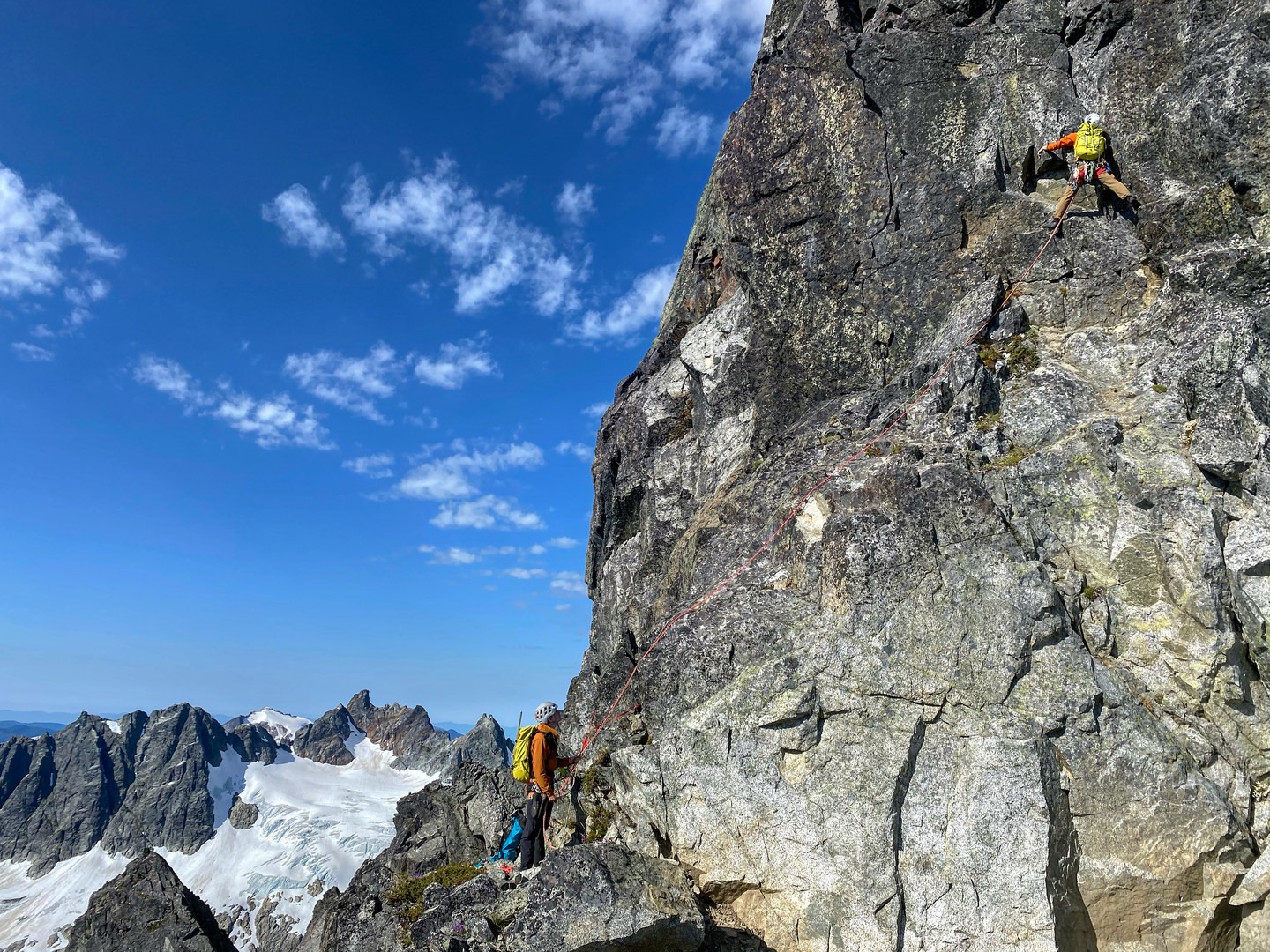You are here
If you've ever driven to Whistler, then you will have seen the incredible Tantalus Massif. The long heavily glaciated peaks forms an incredibly beautiful skyline. Mount Alpha is the furthest left on this impressive range, and Alpha's East Ridge is widely considered to be one of the best alpine routes in the area. The 3rd class scrambling is pure fun, with only brief sections of exposure, and one short pitch of technical climbing. The best season for this route is later in the summer once the snow has melted. The route does mostly face south though, so even earlier in the summer you shouldn’t encounter too much snow.
The East Ridge is a very good introductory route for alpine rock. For rock climbers the actual rock section might not pose a challenge, but mountaineering skills are necessary. Ample scrambling/peak bagging experience on Sky Pilot, West Lions, and similar routes is highly recommended prior to attempting this route. Glacier travel skills are also necessary as the crevasse risk is moderate to high depending on the time of year.
Getting to the route is the trickiest part of this endeavor. Follow the instructions for the Lake Lovely Water Trail to get to the lake side.
From Lake Lovely Water you will find a faint, but visible trail on the eastern edge of the lake, heading towards the Russian Army Camp and Lambda Lake (it’s about 200 meters beyond the main campsite). People often use the trail turn off as a campsite. You may need to walk past the tents to find the trail proper. If you are doing the trail in two days, it’s prudent to scope the trail out in the daylight.
The trail climbs steeply through subalpine trees. It’s a decent climb, about 700 meters. During the last section, the trail gets faint and is easily lost. Head for the low point in the ridge if in doubt. It takes an average party about 1.5 - 2 hours to gain the ridge. From here the ridge is quite easy to walk along. You can head out onto the glacier but this section is quite steep. Following the ridge is easier, and fairly comfortable with mostly hiking between boulders. The ridge begins to narrow and you will find a narrow gulley that leads to the glacier. There is a slight step that serves as a good spot to crampon up. Crossing the glacier is fairly straight forward, but there are numerous crevasses, most of which are covered well into late summer. The first upward snow slope is tempting to follow, but keep going until you get to the base of the summit pyramid. The top of the snow field steepens, then flattens just beneath the first rock section, which is marked by a piton 15 meters up the wall.
From here you can cross some exposed 5th class terrain and pick up some crumbly rock to the northwest. Most folks prefer to take the 5.8 pitch. This is easily found by looking for the old climbing tat above. There is also a rather prominent piton jammed into a small crack. The climbing route goes through a roof just above this piton. It’s an awkward move, and made easier by a size 3 cam. Despite the weight this piece is not a bad idea to bring. The other protection is quite good, and the rock is excellent. There is a pair of bolts above the first bit of tat, about 40 meters above the first climbing section. If you belay from directly beneath the piton, scrambling some 4th class, you could make a pair of 30m double ropes work.
The next section is 5.5 at most. Many strong climbers wouldn’t need a rope. Immediately past these sections the rock is solid, and almost all 3rd class. The scrambling here is great fun. The route finding is generally straight forward. Sticking to the ridge is easiest. About 150 meters beyond the climbing there is a trickier section. A small unexposed gulley has some 5th class moves if you stay exactly on the ridge, or go down and around about 15 meters to find an easier 4th class section.
The route then descends briefly before climbing back up the final summit section. It’s mostly trail here, with short sections of 3rd class.
The descent follows the scrambling route. There's lot’s of loose scree down to the col. Here you follow more rubble through some patches of grass and dirt. There are several cairns here. We followed the easternmost cairn and found some tat rap anchors. Two rappels got us to the snow field, and eventually onto talus. The official trail takes a long line out westwards, and down to the Russian army camp where you follow the trail down to Lambda Lake. It is also possible to follow the talus and head for the tarns visible bellow. Keep slightly east, and descend near a waterfall to the tarns. The hill on the south east overlooking the tarns has a faint trail that connects to the main trail. From here it’s a quick descent back to camp.
Logistics + Planning
Current Weather: Powered by Dark Sky























Comments
Sign In and share them.